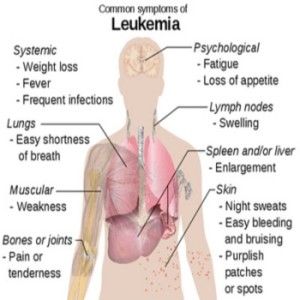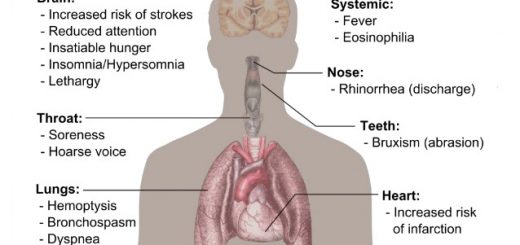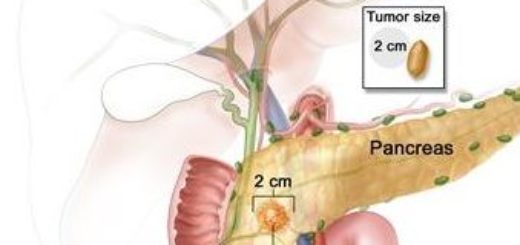Leukemia symptoms, types, causes and risk factors
Leukemia
Leukemia is the malignancy (cancer) of blood cells, It is also spelled leukaemia, It is a group of cancers which begin in the bone marrow and result in high numbers of the abnormal white blood cells, These white blood cells are not fully developed and they are called the blasts or the leukemia cells.
The symptoms include bleeding and bruising problems, feeling tired, fever, and the increased risk of infections, The symptoms occur due to the lack of normal blood cells, The diagnosis is typically made by the blood tests or the bone marrow biopsy.
Leukemia is the cancer of blood cells, So, It is sometimes referred as the blood cancer, The risk factors have been identified, including the radiation exposure and exposure to benzene, The people with leukemia are at increased risk for developing the infections, anaemia, and bleeding.
The white blood cells responsible for fighting the infection, The abnormal cells do not function in the same way as the normal white blood cells, When leukemia cells continue to divide and grow, crowding out the normal blood cells, So, it becomes difficult for the body to fight the infections, control bleeding , and transport oxygen.
The treatment of leukemia depends on the type of leukemia, the features of leukemia cells, the disease extent, and the prior history of treatment, as well as the age and the health of the patient, Most patients with leukemia are treated with the chemotherapy, Some patients may have the radiation therapy and/or the bone marrow transplantation.
Leukemia symptoms
The popular symptoms of chronic or acute leukemia include the pain in the bones or the joints, The swollen lymph nodes which are typically not painful or tender, The fevers or night sweats, feeling tired or weak, bleeding and bruising easily, The frequent infections, The discomfort or swelling in the abdomen, The weight loss or loss of appetite.
Leukemia signs are the confusion, The enlarged liver, The enlarged spleen, the headache, loss of muscle control, nausea, seizures, vomiting, Easy bruising and bleeding tendencies causes bleeding from the gums, purplish patches on the skin, or small red spots under the skin.
Types of leukemia
Leukemia is the group of different cancers of the blood cells, It can be acute or chronic, and the people with chronic leukemia may not notice any symptoms before the condition is diagnosed with the blood test, Chronic leukemia develops slowly over time, the cells may grow to high numbers as in the acute leukemia causing the similar symptoms.
Acute leukemia are more likely to cause the symptoms, The symptoms of all forms of leukemia are related to the proliferation of the abnormal blood cells and replacement of the bone marrow by the cancerous cells, And it requires the fast and aggressive treatment.
There are different types of leukemia, Leukemia is known as the acute leukemia if it develops rapidly, most leukemia cells accumulate very quickly in the blood and bone marrow, leading to the symptoms such as tiredness, easy bruising, and susceptibility to the infections.
Leukemia is affected by how quickly the disease develops (the acute or chronic) and by the type of blood cell that is affected (the lymphocytes or myelocytes), The four main types of leukemia include the acute lymphocytic leukemia (ALL), the chronic lymphocytic leukemia (CLL), the acute myelocytic leukemia (AML), and the chronic myelocytic leukemia (CML).
Acute lymphocytic leukemia (ALL, It is also known as the acute lymphoblastic leukemia) is the most popular type of leukemia in the children but it can also affect the adults, And the immature lymphoid cells grow rapidly in the blood.
Acute myeloid leukemia (AML, It is also called the acute myelogenous leukemia), involves the rapid growth of the myeloid cells, It occurs in the adults and the children, Chronic myeloid leukemia (CML, It is also known as the chronic myelogenous leukemia) primarily affects the adults.
The chronic lymphocytic leukemia (CLL) is the slow-growing cancer of lymphoid cells which affects the people over 55 years of age, It does not occur in the children or the adolescents.
Hairy cell leukemia is the unpopular type of chronic leukemia, The chronic myelomonocytic leukemia (CMML) is another type of chronic leukemia which develops from the myeloid cells, The juvenile myelomonocytic leukemia (JMML) is the type of myeloid leukemia which usually occurs in children under 6 years of age.
The large granular lymphocytic leukemia (LGL leukemia) is the type of chronic leukemia that develops from lymphoid cells, It is slow or fast in growing, Acute promeylocytic leukemia (APL) is the subtype of AM.
Causes of leukemia
The cause of leukemia is thought to involve the combination of the genetic and the environmental factors, Leukemia cells have the acquired mutations in their DNA which cause them to grow abnormally and lose the functions of the typical white blood cells.
One type of change in the cells’ DNA that is popular in leukemia is known as the chromosome translocation, The portion of one chromosome breaks off and attaches to the different chromosome.
The exchange of DNA between chromosomes 9 and 22 that causes the Philadelphia chromosome, This creates the oncogene (cancer-promoting gene) known as BCR-ABL, This DNA change is not inherited but takes place in the life of the affected individual.
Most leukemias are not the hereditary, but some genetic mutations and conditions can be passed along to the offspring which increase the chances of developing leukemia.
The condition known as Li-Fraumeni syndrome is characterized by the inherited mutation in the tumor suppressor gene known as TP53, and individuals with this condition have the increased risk of leukemia and other cancers.
What are leukemia risk factors?
Exposure to the radiation causes developing of AML, CML, or ALL, Leukemia is observed in the people surviving from atomic bombs, and The radiation therapy for cancer can cause leukemia, Certain chemotherapy drugs for cancer can increase the risk for AML or ALL.
The exposure to benzene that is used popular in the chemical industry, It increases the risk of leukemia, Cigarette smoking is causes the developing AML,The human T-cell leukemia virus type 1 (HTLV-1) is the virus which causes the rare type of leukemia.
Down syndrome, Li-Fraumeni syndrome, and the other medical conditions causes the developing of leukemia, The blood disorders that is known as myelodysplastic syndromes confer the increased risk of developing AML.
Cancer and Radiation Therapy advantages & disadvantages
Side effects of Chemotherapy after the surgery to remove cancer




